So how many SEO keywords do you need for your website?
With all the advice out there, it’s tough to know the real answer.
Here’s the truth… it depends.
There’s no one-size-fits-all answer, but there are definitely hints by Google.
This article is your myth-busting guide to answer “how many SEO keywords should I use?”.
And spoiler alert — more keywords does not always mean more traffic.
And too few might mean you’re missing out.
So if you’re packing in keywords like a crowded elevator, or you’re the cautious type, using just a handful, stick around.
I’m about to make your SEO keyword strategy a whole lot clearer.
Myth #1 — more keywords mean better rankings
It’s like thinking you can win a race by just adding more fuel to the car.
It doesn’t quite work that way.
Firstly, there’s the risk of keyword stuffing.
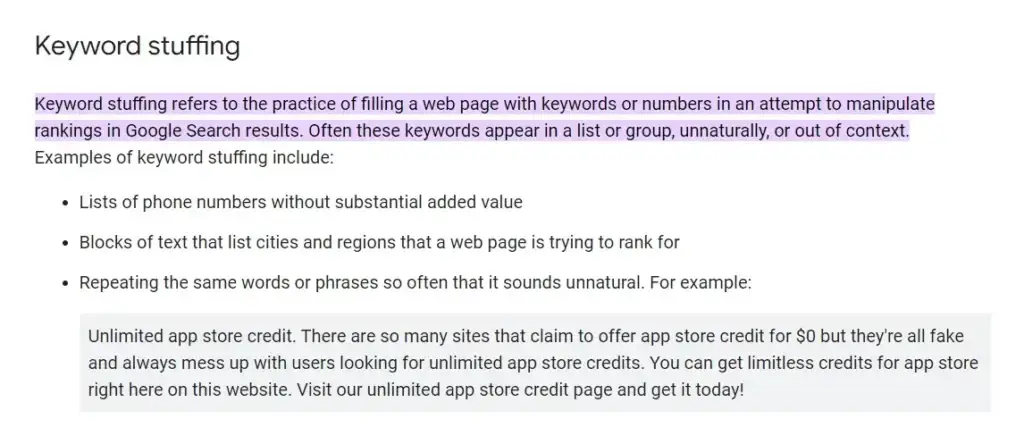
It’s like trying to fit ten people into a five-seater car.
Not only does it look crowded, but it also makes for an uncomfortable ride.
In the content world, this means your writing can become awkward and hard to read.
The focus shifts from quality content to just cramming in keywords.
Studies back this up.
For instance, Bekhuis (2015) emphasised the importance of selecting and placing keywords wisely.
The goal is to improve the impact and discoverability of your content.
But when you cross the line into spamdexing or keyword stuffing, you’re entering the shady side of SEO.
It’s unethical and can hurt your content’s quality.
More research showed that even though pages with a high density of keywords were indexed by major search engines like Google, Yahoo!, and Bing, this doesn’t necessarily mean it’s a good practice.
It’s a grey area, and what one search engine tolerates, another might not.
So, what should you do?
Most SEO communities suggest a sweet spot: a keyword density of about 1-2%.
But as you’ll learn in this video, Matt Cutts (Google’s ex-head of webspam) explains that it has diminishing returns.
Myth #2 — every page needs unique keywords
There’s a common belief that each page on a website should target entirely unique keywords.
It sounds right, but it’s not always the best strategy.
Pages often rank for dozens of related keywords.
It’s not about having a different keyword for each page, but more about understanding the intent behind the search.
Google focuses on what the searcher is really looking for.
So, if two keywords have different intentions (even though they sound similar), they’ll need different pages.
- For example, when someone types “SEO consultant” into a search engine, their intent can vary.
They might be looking for information about what an SEO consultant does, how to become one, or the benefits of hiring one.
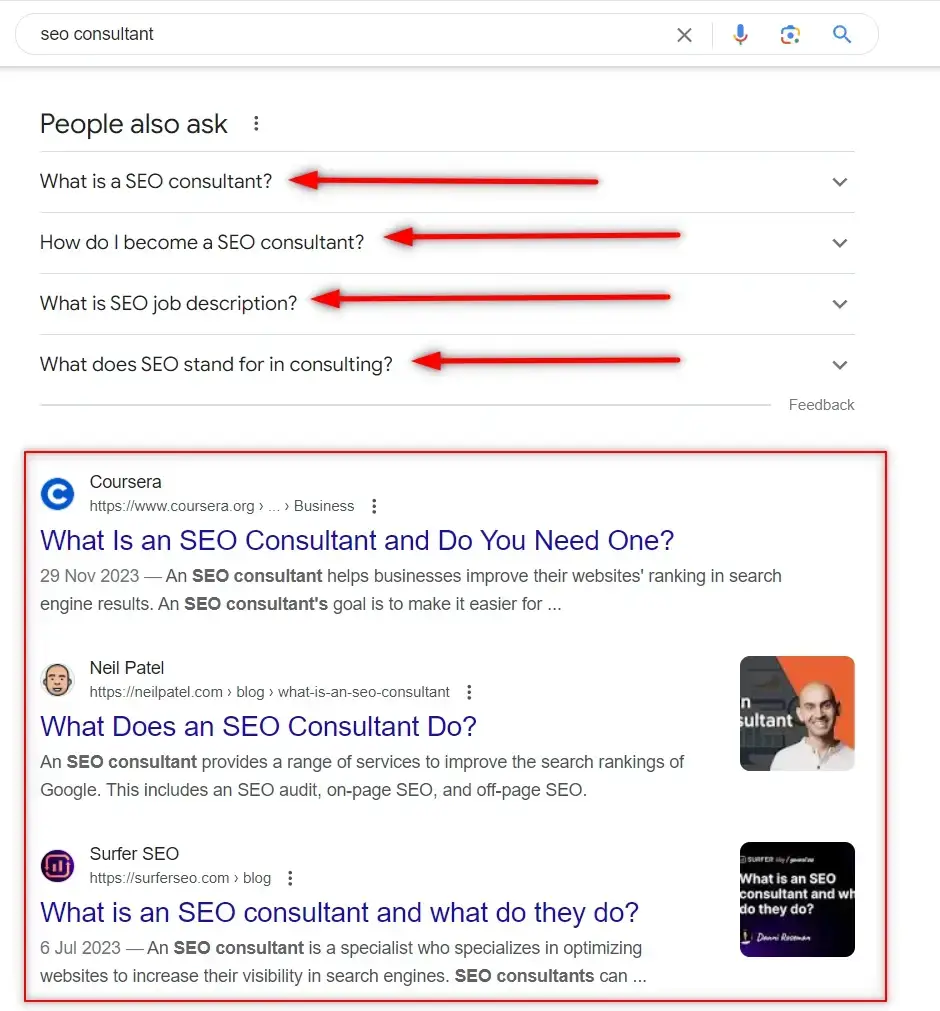
So this search term could lead to informative blog articles or educational content.
- On the other hand, “SEO consultant near me” suggests a different intent.
The searcher is likely looking for a local service provider.
They want to find someone they can potentially hire in their area.
This search is more transactional.
They’re not looking for information; they’re looking to take action.
So, even though these keywords seem similar, they require different pages because they cater to different user needs.
There’s been some research that emphasises this.
The right keywords, along with other SEO strategies, improve a website’s visibility.
But remember, it’s about quality and relevance, not just uniqueness.
Myth #3 — keywords need to be exact matches
Let’s talk about semantic search.
It’s like when you ask someone a question, and they understand not just the words, but the meaning behind them.
Search engines have become smarter.
They’re now more like a friend who gets what you’re trying to say, even if you don’t use the right words (and yes, we’ve all been there).
This means you don’t have to cram your content with exact-match keywords.
It’s more about the intent behind the words.
For instance, if your keyword is “best running shoes,” you don’t have to repeat it robotically.
“Top running sneakers” or “great shoes for runners” work just as well because they carry the same intent.
Using natural language and synonyms makes your content more user-friendly.

It’s like having a conversation instead of sounding like a broken record.
This approach not only makes your content more enjoyable to read but also aligns with how search engines understand and process language.
Myth #4 — the more competitive the keyword, the better
It’s like believing the only good pizza is from the busiest place in town (bandwagon effect).
Sure, it might be popular, but that doesn’t mean it’s always the right choice for you.
Highly competitive keywords are like crowded beaches on a hot day.
Everyone’s there, so it’s tough to find a good spot.
For your website, this means battling against giants for a chance to rank, which can be a tough and often unfruitful fight.
Instead, consider the charm of long-tail, niche keywords.
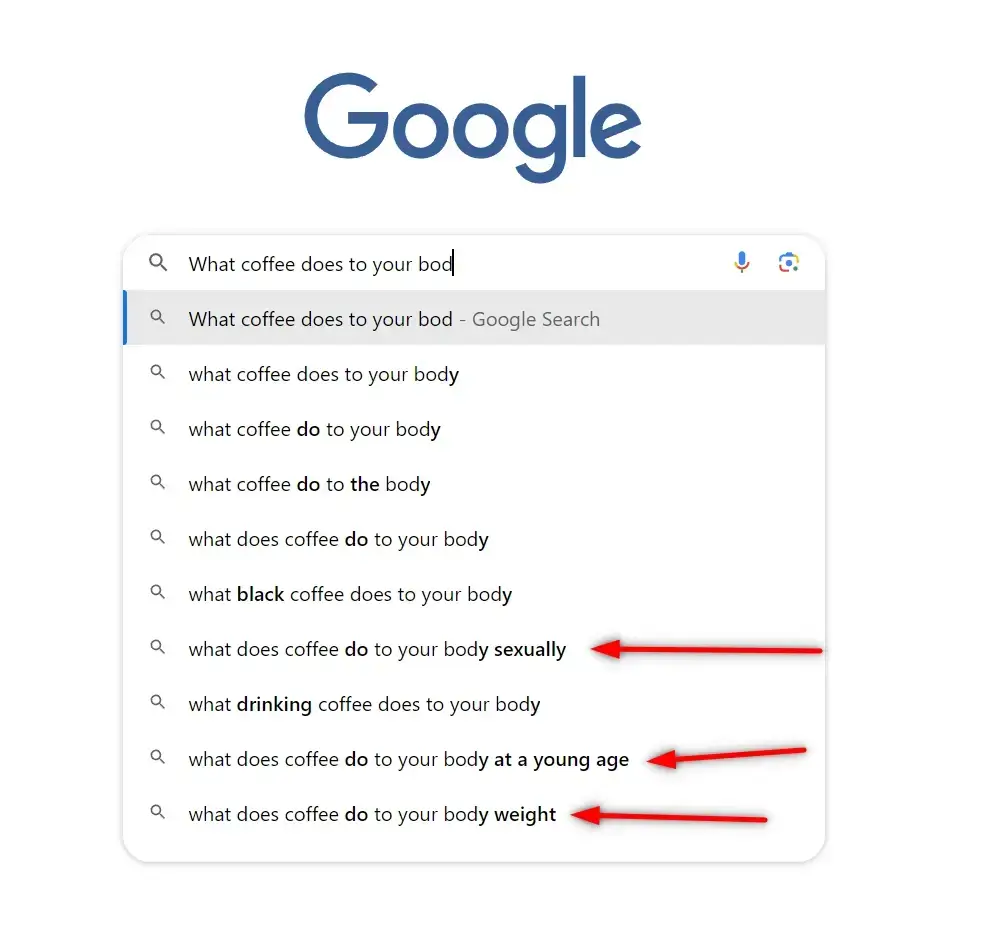
These are like hidden coves – less crowded but potentially more rewarding.
They cater to specific audiences and often have a clearer intent.
While they might attract fewer visitors overall, those who do come are often more engaged and closer to making a decision.
Focusing on lower competition keywords can be a powerful strategy.
It’s like a local diner that might not be world-famous but has a loyal customer base.
You have a better chance of ranking higher, and for small businesses or specific industries, this can lead to more targeted, quality traffic.
So, rather than joining the rush for the most competitive keywords, find your niche.
It’s about being the big fish in a smaller pond rather than a small fish in the ocean.
Myth #5 — SEO is all about keywords
Thinking SEO is just about keywords is like believing a salesperson’s only tool is their pitch.
In reality, selling – much like SEO – involves a whole lot more.
Keywords are important, but they’re just one piece of the puzzle.
If you focus only on keywords, you miss the bigger picture.
It’s like a salesperson who knows all the product specs but can’t connect with the customer using emotional intelligence (EQ).
SEO is not just about getting traffic; it’s about attracting the right traffic that converts into sales.
This means understanding and addressing the needs and desires of your audience.
Think about it.
What good is ranking at the top if your content doesn’t hook your audience?
It’s like having a storefront in a prime location with sh*t window displays.
You need to grab attention and keep it.
This is where sexy headlines and high-converting copy come into play.

They’re your sales team on the web, working 24/7.
Your content should do more than just rank.
It needs to engage, convince, and convert.
It’s a blend of art and science.
You’re not just aiming to please search engines; you’re crafting a message that resonates with real people.
It’s about creating an experience that leads them down the path from casual visitor to loyal customer.
So, remember, while keywords help people find you, it’s the power of your content that turns them into customers.
SEO gets them in the door; your words make them stay and buy.
It’s a partnership where each element supports the other, driving towards that ultimate goal: growing your business.
How to choose the right keywords
Alright, let’s dive into the nuts and bolts of picking the right keywords.
By now, you know it’s not about grabbing any keyword that walks through the door.
It’s a thoughtful process, like choosing the right ingredients for a special dinner.
Ultimately, understanding what your audience is searching for – and why – guides your keyword selection.
But how do you find these? Let’s talk tools.
And yeah, you’ve got to invest a bit here.
Tools like Ahrefs and Semrush make the job easier and give you better results.
They help you dig into what keywords your competitors are using, how hard it would be to rank for certain keywords, and what variations you might not have thought of.
But where do you start?
Well, I’ve cooked up something that might help.
Check out my beginner’s keyword research guide.
It’s straightforward and practical.
Once you’ve got a grasp on the basics, you might want something to shorten the process.
That’s where this keyword research checklist comes in. It’s a handy little cheat sheet.
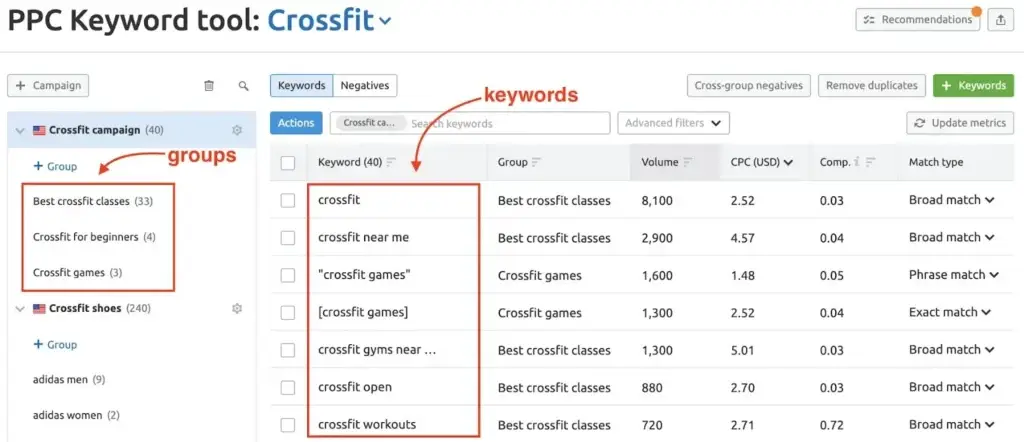
Remember, aligning your keywords with what your audience is looking for and the content you’re creating is huge.
It’s not just about traffic; it’s about getting the right traffic.
How to add keywords into your content
So, you’ve got your keywords.
How do you weave them into your content without it sounding forced?
It’s a bit like seasoning food.
The right amount enhances the flavour, but too much can spoil the dish.
And it just sucks when you add too much salt, am I right?
Let’s start with the basics:
- Titles
- Headings
- Meta Titles
- and Meta Descriptions
These are like the front door to your content.
They invite both readers and search engines in.
Titles and meta titles need to be catchy and clear.
Think of them as the headline of a newspaper article.
They should grab attention and make the reader want to know more.
Your meta description is like a movie trailer — it gives a sneak peek of the content without revealing too much.
The only tricky thing here is that you’re limited to about 60 characters for meta titles, and 155 for meta descriptions.
It’s simple, but not easy.
Now, let’s talk about headings — H1, H2, H3, and so on.
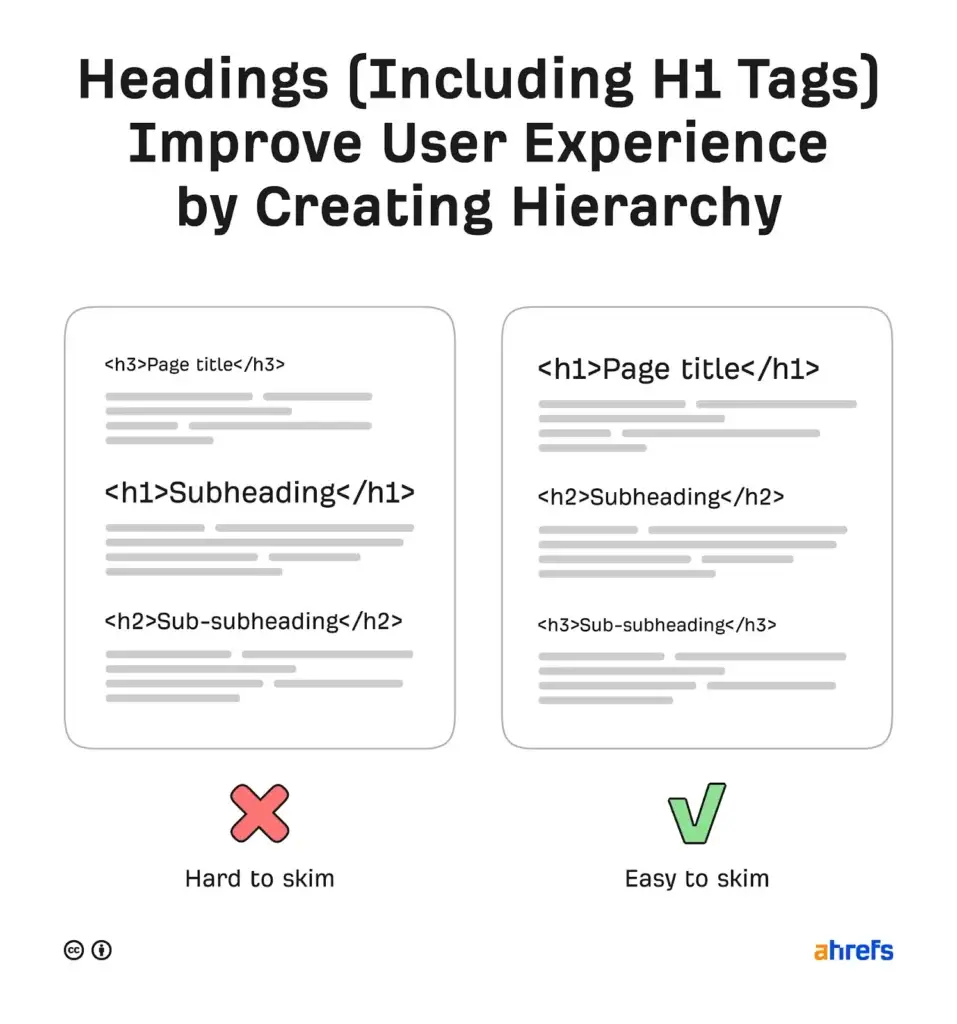
These are like chapter titles in a book.
They organise your content and make it easier to digest.
Your H1 is the main title of the page — the big, bold statement of what your page is about.
You usually sneak the main focus keyword in here, like I’ve done for this article: “How many SEO keywords should I use”.
The H2s and H3s break down the content into smaller, more specific parts.
Injecting keywords into these headings helps search engines grasp the structure and main points of your content.
In the body of your content, your keywords should blend in like natural conversation.
But it needs to keep flowing and feel organic.
And don’t forget about images.
The alt text is a great place to slip in a keyword.
Think of it as tagging an image — it tells search engines what the image is about and how it relates to your content.
You can easily do this now with ChatGPT, by uploading images and asking it to write the ALT text for you.
Super easy.
Remember, balance is key.
Use keywords to guide your content, not dominate it.
So, to keyword stuff or not to keyword stuff?
Should you cram your content with as many keywords as possible?
The short answer: No.
It’s like overpacking a suitcase.
Everything gets crammed in, but it’s messy and hard to handle.
The focus should always be on quality, not quantity.
It’s not about how many keywords you can stuff into your content.
It’s about how well your content speaks to your audience.
Create content that’s valuable and interesting to your audience.
It should answer their questions, solve their problems, or entertain them.
This is what keeps them coming back for more.
SEO is important, but it’s only one part of the puzzle.
If you focus solely on SEO and neglect the human element, your content will fall flat.
So, forget about keyword stuffing.
Instead, weave your keywords naturally into content that engages and resonates with your audience.
Remember, you’re writing for people first and search engines second.

